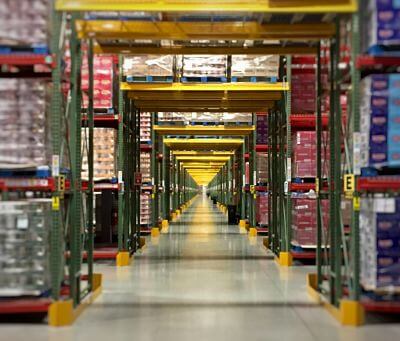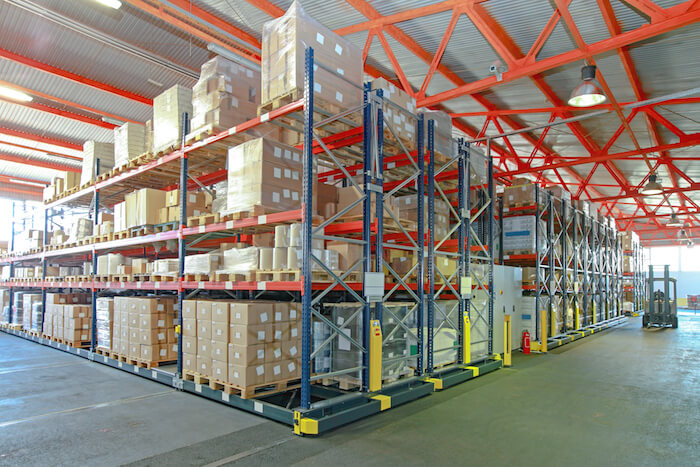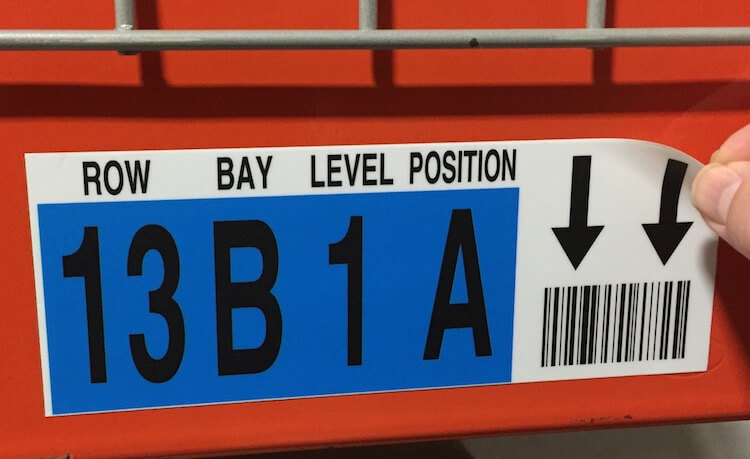How Modern Warehouses Are Adapting for E-Commerce Fulfillment
The rise of online sales is a blessing and a curse for many warehouse operators.
As ID Label CEO and president Neil Johnston notes: “You can’t understate the impact of e-commerce on the warehousing space. The huge increase in SKUs and inventory volumes in these facilities has put pressure on traditional processes for managing inventory and throughput as warehouse managers try to keep pace with demand for rapid order fulfillment.”
So how are today’s warehouses adapting?

 “E-commerce operators require up to three times more space than traditional warehouse users. That’s because of the greater diversity in products they handle and the need to have them immediately accessible.”
“E-commerce operators require up to three times more space than traditional warehouse users. That’s because of the greater diversity in products they handle and the need to have them immediately accessible.”
– Neil Johnston, ID Label CEO

Many modern warehouses are being customized to handle smaller orders with more frequent shipping.
Warehouses Are Changing Because Their Businesses Are Changing
Not surprisingly, automation and technology are critical components of this evolution.
According to a recent article in Supply Chain Dive, modern warehouses are being customized to handle smaller orders with more frequent shipping. The customization is changing the way workers pick orders. It also means reconsidering the layouts of warehouses to drive maximum efficiency and productivity.
This was the case recently for one ID Label client, a leading third-party logistics provider. They opted to completely reconfigure the racking at one of its larger facilities, relying on ID Label for the manufacturing and installation of new rack labels and signage.
“Our client — a well-known specialty food manufacturer — needed to move its product more quickly from our DC to its retailers,” noted the 3PL’s engineering project leader. “We made the decision to redesign our rack layout and the way we fulfilled their orders to achieve the desired results.”
Challenge Meeting Labor Demands
Another aspect of the e-commerce boom: it’s increasingly difficult for managers to fill open warehouse jobs.
Warehouse automation is often only a part of the solution to a company’s fulfillment needs. And it is expected to only mitigate, not solve, the labor supply-demand imbalance.
A Warehouse Growth Spurt
Today’s warehouses are incorporating physical changes, as well as operational ones.
“E-commerce operators require up to three times more space than traditional warehouse users,” Johnston said. “That’s because of the greater diversity in products they handle and the need to have them immediately accessible.”
With the demand for increased volume, warehouses are expanding and being built with higher clear heights. Where 20-foot clear heights were once common, new warehouses are reaching 40 feet.
In addition, more warehouses and distribution centers are being built closer to populated areas. This helps meet the demand for quicker deliveries, which is especially critical for food and other products with a short shelf life.

More warehouses and distribution centers are being built closer to populated areas to meet the demand for quicker deliveries, which is especially critical for food and other products with a short shelf life.

Growing Demand for Flexible Barcoding Solutions
“There’s definitely a growing need for flexibility in labeling rack storage locations,” Johnston said. “Warehouse operators want more leeway to slot their products in a way that maximizes use of space and improves picking efficiencies whenever they can.”
That can mean a greater need to relabel pallet locations with more frequency than was typically done in the past due to changes in product demand, higher return volumes or seasonal requirements, for instance.
Two ID Label warehouse labeling products were designed with this need in mind:
- Clean Release™ — a removable warehouse label that can easily be removed and repositioned to accommodate inventory location changes.
- Beam Renew™ — a custom-engineered cover-up solution that applies directly over old or damaged barcode labels without the time and expense of cleaning, scraping or painting.
“We’re continuously developing new products and investing in new manufacturing capabilities to meet the changing needs of today’s warehousing market,” Johnston said. “It’s definitely an exciting time for our industry.”

The ID Label Advantage
ID Label manufactures extremely durable warehouse rack and bin location labels. Our materials have been tested and used in warehouse operations around the globe.
We also provide warehouse signage and turnkey nationwide installation services to provide a complete solution to our many clients who rely on us for all their warehousing needs.
Interested in learning more? Contact us today.
Tags
Recent Posts
- How to Remove a Rack Label: A Step-by-Step Guide
- Eliminate the Hassle of Removing Outdated or Damaged Warehouse Labels
- The Essential Role Labeling Plays in Food Traceability
- Ask the Expert: Should I Choose Paint or Tape to Mark My Warehouse Floors?
- Scott Bender Joins ID Label as Vice President of Sales